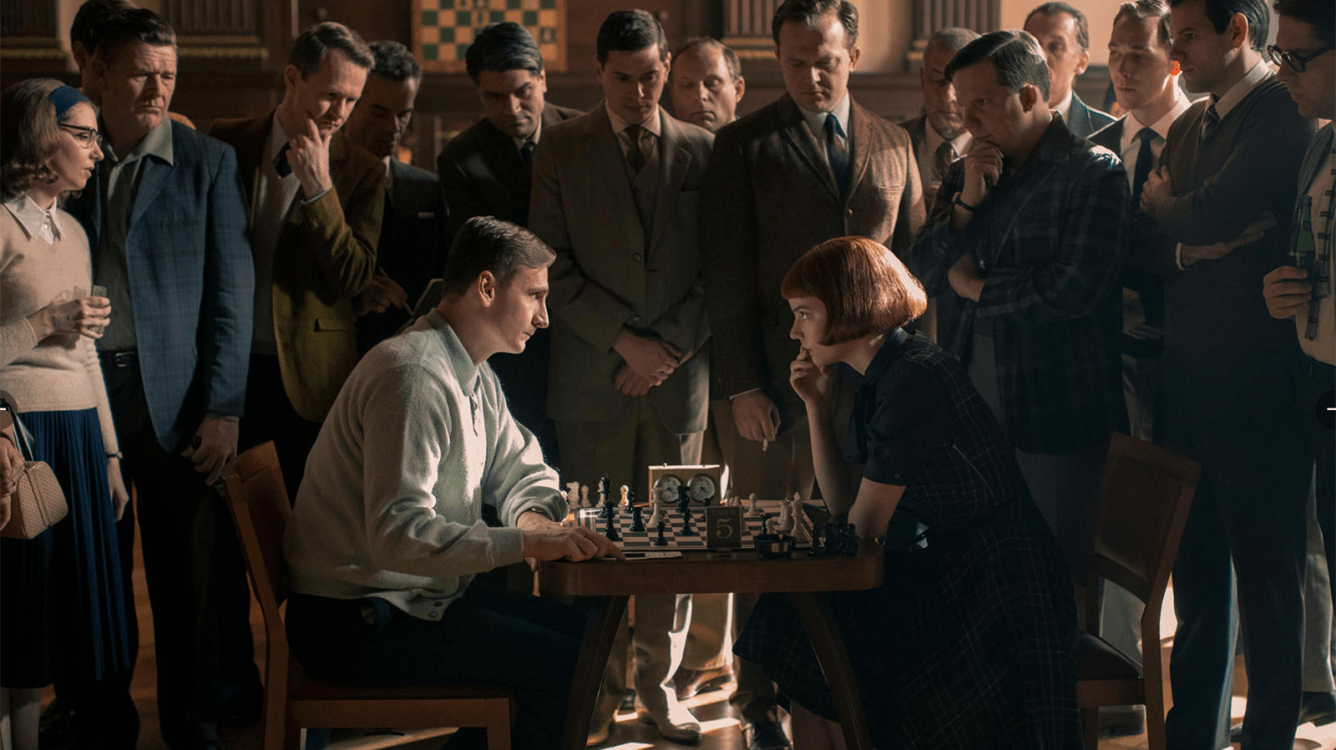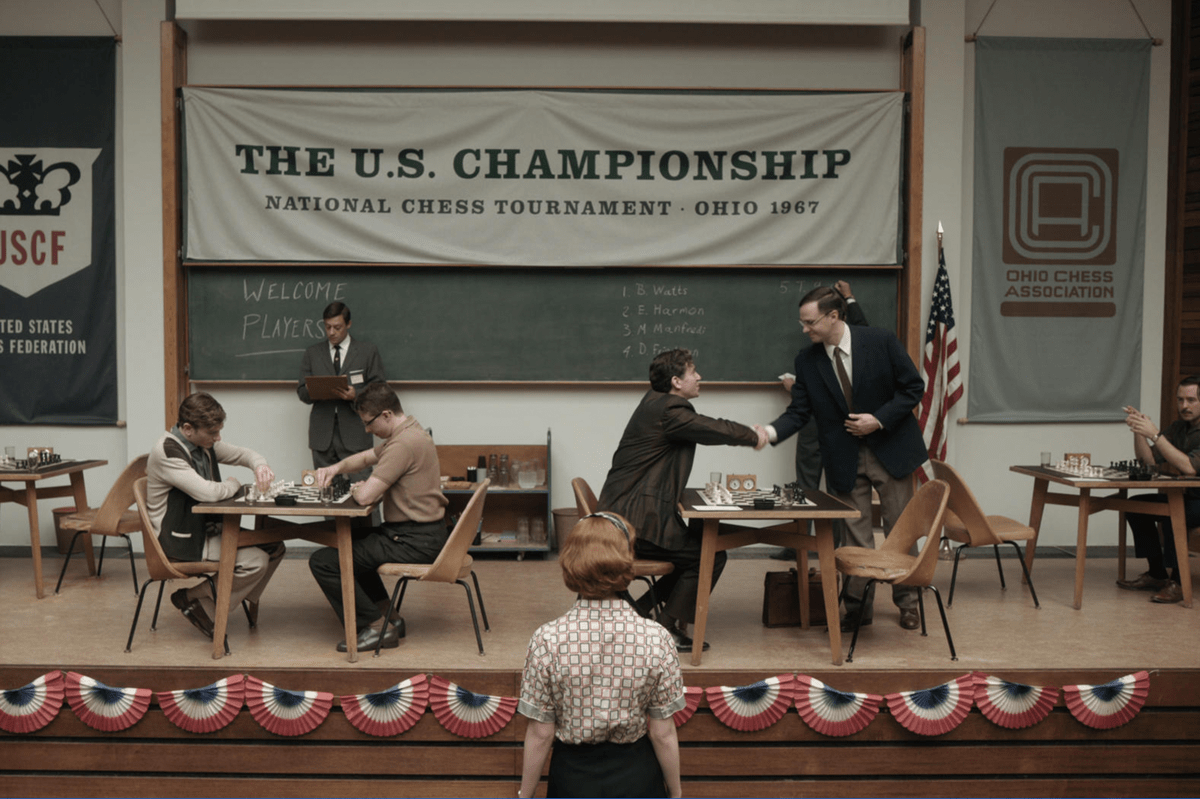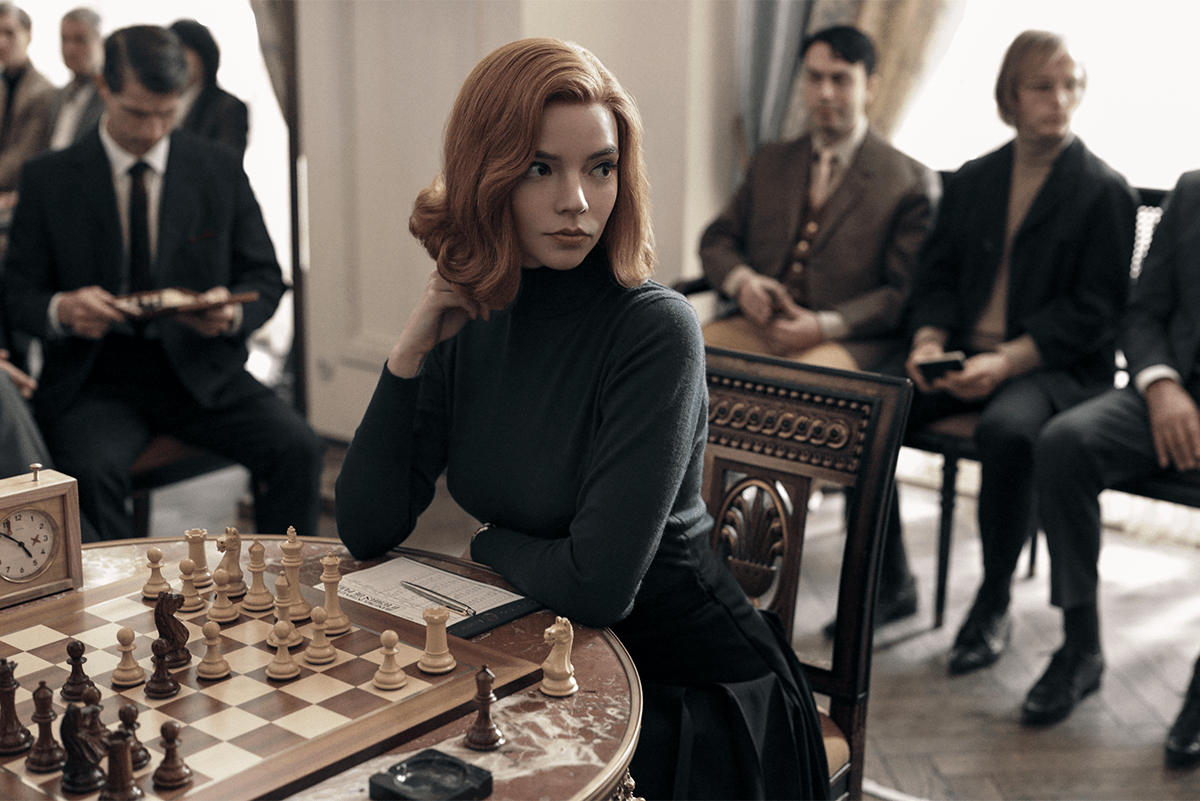
The Queen's Gambit: A Netflix Series Where The Chess Is Done Right
The Queen’s Gambit is a seven-episode series, debuting October 23 on Netflix. Set in the Cold War-era, it is a coming-of-age story that explores the true cost of genius: that of Beth Harmon, a highly talented female chess player.
Initially, The Queen's Gambit was supposed to be a film. Allan Scott acquired the rights to Walter Tevis's novel some 30 years ago and had different directors working on it, the last being Heath Ledger who died in the middle of preparing the movie.
Soon after he finished working on Godless (a successful American Western drama that was created in 2016-2017) Scott Frank got the idea to turn The Queen's Gambit into a miniseries. "Netflix fell in love with the idea and said yes to it," said Frank.
The two creators shared the wish to make the series powerfully emotional. Allan Scott: "It's about a child growing up, interrupted by this brilliant talent that she has. It’s very difficult to have a normal life if you have an extra normal ability in almost any area, so this story is much more about her demons than it is about her obsession with chess. In fact, there’s nothing you need to know about chess."
The show is especially appealing for its cinematography and production design. An important reason for this is the continued cooperation between Scott Frank and director of photography Steven Meizler (Armageddon) who also worked together for Godless. The German production designer Uli Hanisch (Cloud Atlas) played a big role there as well.
Many chess fans will be wondering: what about the chess? Was the board set right? Are they messing up, as they do in so many other movies and commercials? The answer is: absolutely not—the chess is done right.
The creators wanted to avoid viewers with chess knowledge being taken out of the story because of some inaccuracies. Also, they wanted the chess games to be exciting. For this, both GM Garry Kasparov and the famous chess coach Bruce Pandolfini served as advisors. The latter, who worked on Searching for Bobby Fischer as well, also helped the actors with moving the pieces and hitting the clock in a natural way.
Anya Taylor-Joy, who plays the main character, said: "Even though it’s such a mental game, I think what we've done with the show is choreograph all of the chess sequences with a different understanding. Some of them are a bit sexier, some of them are really intense when she's deeply upset, and then because she also struggles with addiction, that can add a whole other element to them as well. They are played out like action sequences. It's actually my favorite part of the show."
Abandoned and entrusted to a Kentucky orphanage, Beth (played by Isla Johnston in her early years but mostly by Anya Taylor-Joy) discovers an astonishing talent for chess while developing an addiction to tranquilizers provided by the state as a sedative for the children.
Haunted by her personal demons and fueled by a cocktail of narcotics and obsession, she transforms into an impressively skilled and glamorous outcast while determined to conquer the traditional boundaries established in the male-dominated world of competitive chess.
The series is written and directed by Academy Award nominee Scott Frank (Minority Report, Logan, Godless) and executive produced by Frank, William Horberg (The Talented Mr Ripley), and Allan Scott (Don’t Look Now, The Preacher’s Wife), who also co-created the series.
For this story, Chess.com spoke to writer, director, and executive producer Scott Frank—who started by saying he is a Chess.com member as well! (He plays every day with a befriended cinematographer.)
Let's start with an obvious question: to what extent did you follow Walter Tevis's novel and can you explain some of the different choices you made?
I followed it fairly closely but I made some changes to the characters here and there, just because I wanted to just deepen them. He wrote the book in 1983 and a lot has happened since then. I just wanted to explore some other issues and go a little deeper, to help me explore the idea of genius."
Allan Scott's original plan was a film. You said it would have turned into a sports movie, about who wins the match. You didn't like that?
It wasn't that I didn't like that. I thought you can hang sort of a deeper story in that sports story structure and you can make it something separate from that, which is her character story, not just if she wins or loses.

Also for chess players, this topic is close to everyone's heart. We all know the stories of Paul Morphy, Bobby Fischer... Can a chess story in cinema do without a troubled mind?
That kind of history is brought up a lot in the series, about people who sort of lost their mind, but I didn't want to indulge in the cliche either. Garry Kasparov and I had many talks about this and I didn't wanna just hammer that. It's mostly about genius in general, and how it takes a cost on you. The thing about Beth Harmon is that she's both the protagonist and antagonist in her own story.
To what extent did you get inspired by earlier chess cinema such as The Luzhin Defense, Pawn Sacrifice, or Queen of Katwe?
I loved Queen of Katwe. I like the book The Luzhin Defense. However, I was trying to figure out how to shoot chess and the one thing I saw when I watched Pawn Sacrifice is that you don't have to show all the chess games, you can show a lot of their faces and that would be just as good.
Chess fans will immediately check one thing: is the board set right? But by taking on Kasparov and Pandolfini you paid a lot of attention to the chess-technical details. Why was that important to you?
It was super important to me because I wanted it to be real. I knew the book had a huge following among chess players and I didn't want a chess player to see the white square on the left. You can track all the moves on the board; even when we're not showing the board they're playing real matches. So when you see them moving, they're really in a game. They know what the move means as they're making them. That was very important to me.

We had Bruce and we had Garry and two other gentlemen on set in Germany as well to help with even the players around them that were playing, so that their boards accurately reflected what was going on. Sometimes the display board once or twice might not match exactly because of just editing stuff. Something very small might be a bit behind but I don't care so much about that. It's mostly about that every chess game is accurate.
Are there also examples of famous historic games in it?
Yes, there are. I can't remember off-hand which ones but I know Bruce also used one of Garry's games. Garry himself designed the final game of the match at the end of the show. Bruce also trained the actors, he also taught them how to play, how to use the clocks, and so on.
There was a piece from the New York Times about the series which, by the way, also focused a lot on the chess aspect. What do you think of their description of Beth as "something like the thinking woman's Rocky?"
[Laughs.] Maybe, yeah. That's interesting. I can't control how people think about it and I'm just glad that people come to something and enjoy it. That's for me the most important part. I don't know if I thought of it as a thinking woman's Rocky, but I like that description!

Initially, you intended six episodes but then you realized you needed seven. When asked why, you answered: "Chess takes time." Can you elaborate?
There's a lot of chess matches and I wanted to give each their due. Each one had their own personality and significance and part of story development. I just wanted to make sure they were not all piled into… if there are too many chess matches in one episode, it didn't feel right. It felt like there was just too much chess. Also, when I thought about losing a chess match or a tournament it was very difficult and the solution seemed to be to rebalance the series and to make seven shorter episodes. It all seemed to play much better once we did that.
What kind of input did Garry give and what can we see of that in the series?
That's actually a great question. The biggest thing that he did, even more than helping with the technical details, was getting inside chess players' heads, particularly the Russian chess players' heads. He gave me all sorts of character ideas and even dialogue to think about. He was a gigantic help in that regard.
The Queen's Gambit consists of seven episodes and premieres on Netflix Friday, October 23, 2020.

